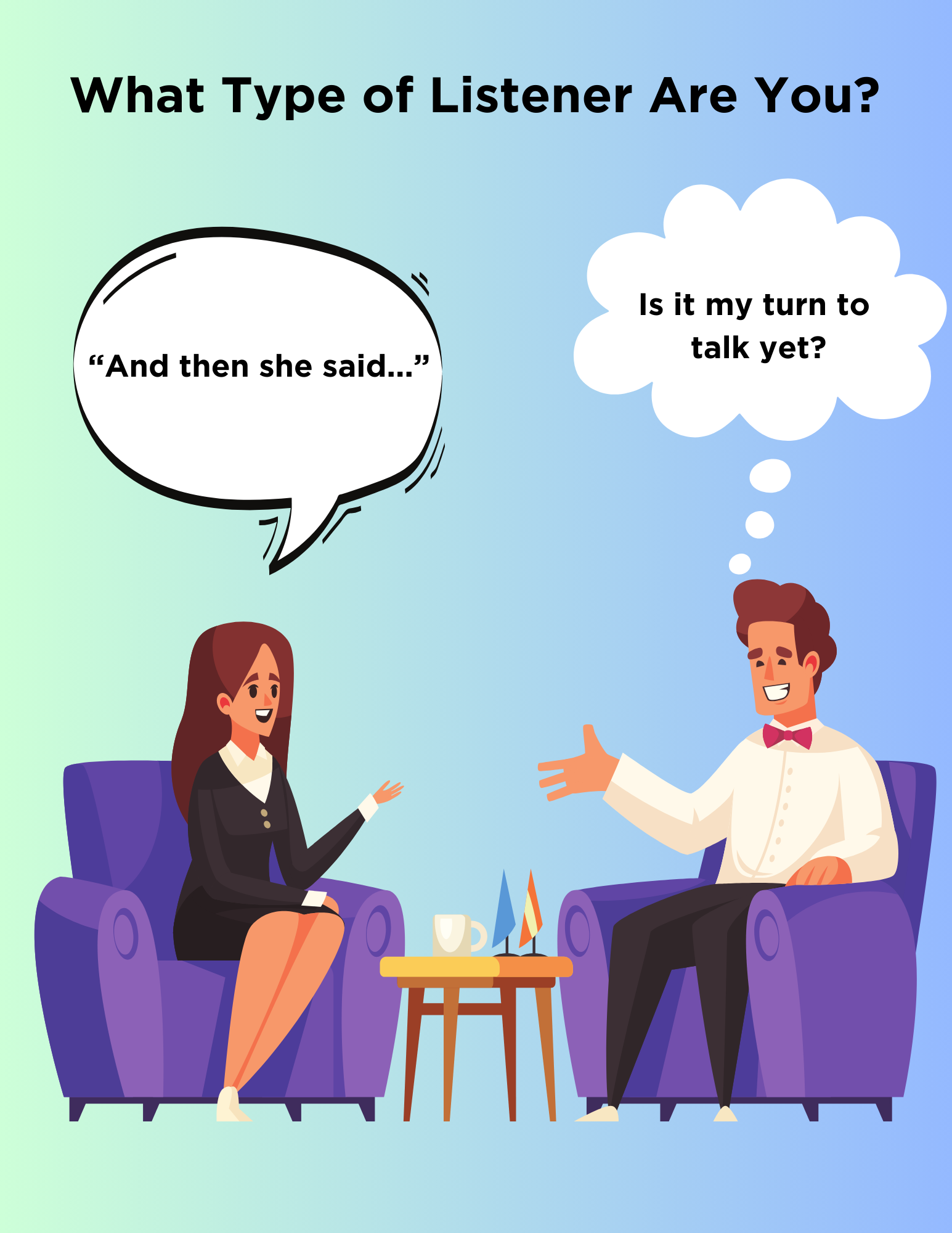
Listening Styles
Just as there are different types of listening, there are also different styles of listening. People may be categorized as one or more of the following listeners:
- People-oriented
- Action-oriented
- Content-oriented
- Time-oriented listeners.
Research finds that 40 percent of people have more than one preferred listening style, and that they choose a style based on the listening situation (Bodie & Villaume, 2003). Other research finds that people often still revert back to a single preferred style in times of emotional or cognitive stress, even if they know a different style of listening would be better (Worthington, 2003). Following a brief overview of each listening style, we will explore some of their applications, strengths, and weaknesses.
- People-oriented listeners are concerned about the needs and feelings of others and may get distracted from a specific task or the content of a message in order to address feelings.
- Action-oriented listeners prefer well-organized, precise, and accurate information. They can become frustrated when they perceive communication to be unorganized or inconsistent, or a speaker to be “long-winded.”
- Content-oriented listeners are analytic and enjoy processing complex messages. They like in-depth information and like to learn about multiple sides of a topic or hear multiple perspectives on an issue. Their thoroughness can be difficult to manage if there are time constraints.
- Time-oriented listeners are concerned with completing tasks and achieving goals. They do not like information perceived as irrelevant and like to stick to a timeline. They may cut people off and make quick decisions (taking short cuts or cutting corners) when they think they have enough information.
People-oriented listeners
People-oriented listeners are concerned about the emotional states of others and listen with the purpose of offering support in interpersonal relationships. People-oriented listeners can be characterized as “supporters” who are caring and understanding. These listeners are sought out because they are known as people who will “lend an ear.” They may or may not be valued for the advice they give, but sometimes people simply want a good listener. This type of listening may be especially valuable in interpersonal communication involving emotional exchanges, as a person-oriented listener can create a space where people can make themselves vulnerable without fear of being cut off or judged. People-oriented listeners are likely skilled empathetic listeners and may find success in supportive fields like counseling, social work, or nursing.
Action-oriented listeners
Action-oriented listeners focus on the action that needs to take place in response to a received message and try to formulate an organized way to initiate that action. These listeners are frustrated by disorganization, because it detracts from the possibility of actually doing something. Action-oriented listeners can be thought of as “builders”—like an engineer, a construction site foreperson, or a skilled project manager. This style of listening can be very effective when a task needs to be completed under time, budgetary, or other logistical constraints. One research study found that people prefer an action-oriented style of listening in instructional contexts (Imhof, 2004). In other situations, such as interpersonal communication, action-oriented listeners may not be interested in listening, since they prefer a “What do you want me to do?” approach.
Content-oriented listeners
Content-oriented listeners like to listen to complex information and evaluate the content of a message, often from multiple perspectives, before drawing conclusions. These listeners can be thought of as “learners,” and they also ask questions to solicit more information to complete their understanding of an issue. Content-oriented listeners often enjoy high perceived credibility because of their thorough, balanced, and objective approach to engaging with information. Content-oriented listeners are likely skilled informational and critical listeners. Ideally, judges and politicians would possess these characteristics.
Time-oriented listeners
Time-oriented listeners are more concerned about time limits and timelines than they are with the content or senders of a message. These listeners can be thought of as “executives,” and they tend to actually verbalize the time constraints under which they are operating.

For example, a time-oriented supervisor may say the following to an employee who has just entered his office and asked to talk: “Sure, I can talk, but I only have about five minutes.” These listeners may also exhibit nonverbal cues that indicate time and/or attention shortages, such as looking at a clock, avoiding eye contact, or nonverbally trying to close down an interaction. Time-oriented listeners are also more likely to interrupt others, which may make them seem insensitive to emotional/personal needs. People often get action-oriented and time-oriented listeners confused. Action-oriented listeners would be happy to get to a conclusion or decision quickly if they perceive that they are acting on well-organized and accurate information. They would, however, do not mind taking longer to reach a conclusion when dealing with a complex topic. They would delay making a decision if the information presented to them didn’t meet their standards of organization. Unlike time-oriented listeners, action-oriented listeners are not as likely to cut people off (especially if people are presenting relevant information) and are not as likely to take short cuts.

